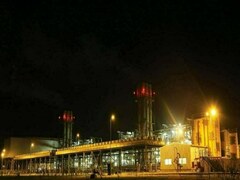 CHICAGO: Warm, humid, late-summer weather across the central United States is speeding the development of corn and soybeans, reducing the threat of frost damage but increasing chances that the harvested plants will have lower yields, agronomists say.
CHICAGO: Warm, humid, late-summer weather across the central United States is speeding the development of corn and soybeans, reducing the threat of frost damage but increasing chances that the harvested plants will have lower yields, agronomists say.
About 10 percent the projected record corn crop was seen at risk last week based on USDA's weekly data, but another week of warm weather boosted crop maturity.
"The good news about the last couple weeks of warmer-than-normal temperatures is that it's helped the crop speed along more quickly. But that is going to cause additional yield loss not unlike a killing freeze," Bob Nielsen, agronomist for Purdue University in Indiana told Reuters after the report was issued.
Nationwide, 64 percent of the corn crop was denting kernels by Sunday, vs. 42 percent a week ago and the five-year average pace of 75 percent by that date, while 97 percent of soybeans had set pods, near the five-year pace of 98 percent.
In the top crop state of Iowa, 54 percent of the corn was in dent, compared to 33 percent on Sept. 1. Minnesota corn was 50 percent dented, up from 22 percent the week before. Typically, more than 70 percent of those states corn should be in dent by early September.
"Warmer-than-average temperatures in the last half of August allowed us to catch up on heat units, growing degree days, and pushed crop development. GDDs were 120 to 130 percent of normal across the state. But frost and drought and heat are still concerns," said Iowa State University agronomist Roger Elmore, referring to corn in the top producing state of Iowa as of the last week of August.
Corn and soybean development have lagged the average all summer after a wet, cool spring delayed planting for up to a month in some areas. Crops have been catching up the past three weeks, especially soybeans, according to USDA.
Near-term forecasts still call for more warm, dry conditions for the upper Midwest.
"Even the longer range forecast looking all the way out to early October isn't showing any frost risk. It's a pretty warm pattern," said Joel Widenor, senior agricultural forecaster with Commodity Weather Group.
The National Weather Service 30-day outlook for September conditions calls for above-normal temperatures. NWS releases its next 30-day outlook for October on Sept. 19. FROST TO STAY A THREAT
Even so, frost risk remains in the big corn states of Iowa, Minnesota, North Dakota and Wisconsin where crops are well behind average. In those states, anywhere from 27 percent to 39 percent of corn by Sept. 1 had not even reached the dough growth stage, when the kernel is soft and maturity is about seven weeks away.
That equated to a frost risk for 1.3 billion bushels of corn, or 10 percent of the expected record 13.76 billion bushel US corn harvest.
On average, the first killing frost in Iowa comes by mid-October. In North Dakota, Minnesota or Wisconsin a killing frost typically hits by the first week in October.
"Any corn that was not to dough stage last Sunday would be at risk - so in Iowa 20 to 30 percent of the corn would be damaged with a normal frost," Elmore told Reuters.
US Midwest map of frost dates: http://link.reuters.com/fuz82v
A killing frost is defined as temperatures staying below 28 degrees Fahrenheit for four hours or more. At that point plants shut down, preventing immature corn kernels from filling completely and translating to lower final test weight at harvest.
For soybeans, the bigger concern from coolness or frost is lower oil content. But the recent heat wave has also been weighing on overall soybean pod development, which has sparked a three-week rally in Chicago Board of Trade soybeans markets.





















Comments
Comments are closed.